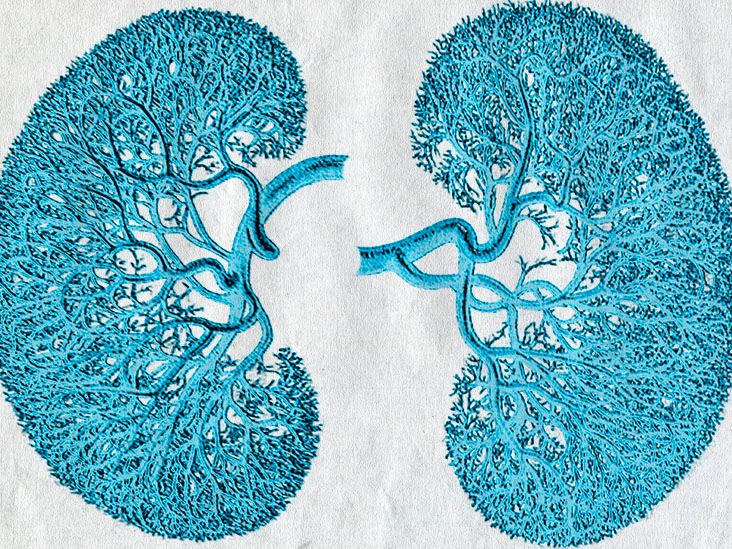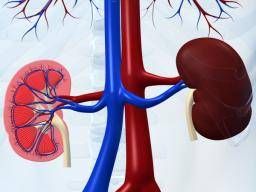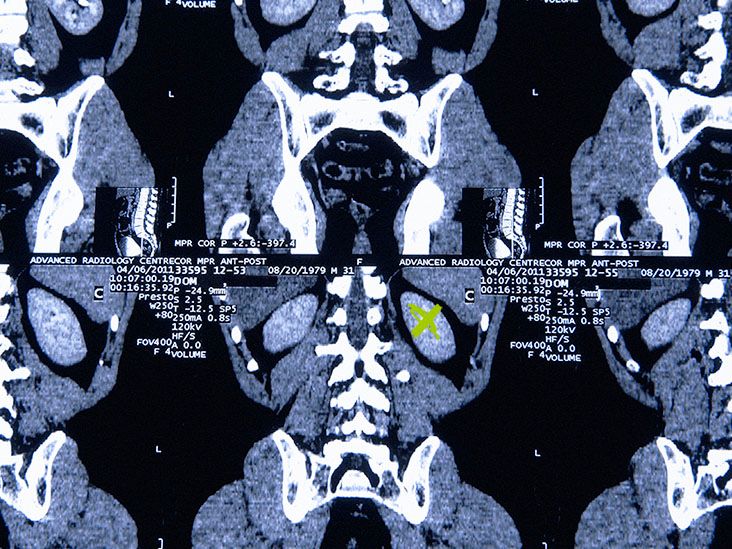Glomerulonephritis refers to several conditions that affect the structures within the kidneys that filter blood. Nephrotic syndrome refers to several symptoms that indicate the kidneys are not working properly.
Glomerulonephritis may be acute or chronic. All forms can be progressive, meaning that without treatment, it can lead to further kidney damage. Acute glomerulonephritis may be primary or secondary to another underlying condition or illness.
Nephrotic syndrome is a group of symptoms that indicate an issue with the kidneys. Several different conditions, including some forms of glomerulonephritis, can cause nephrotic syndrome.
This article reviews the differences and similarities between glomerulonephritis and nephrotic syndrome. It explores the symptoms and treatments for each.

Glomerulonephritis is a
Nephrotic syndrome
In other words, glomerulonephritis is a type of kidney disease, while nephrotic syndrome describes a set of related symptoms associated with kidney issues.
Some types of glomerulonephritis can cause nephrotic syndrome. It
- high blood pressure
- hematuria (blood in the urine)
- weight gain, due to fluid retention
Glomerulonephritis is a condition that can worsen without treatment. Healthcare professionals may treat it directly, as well as any underlying condition that may cause it to occur.
Treatment for nephrotic syndrome involves addressing the underlying cause of a person’s symptoms.
Glomerulonephritis and nephrotic syndrome share some similar features. Both occur due to glomerulus involvement.
The glomeruli are small structures that filter the blood as it passes through the kidneys. They help remove toxins and other waste material.
Both conditions can affect people of all ages, from children to adults.
Because glomerulonephritis
- Membranous nephropathy: This is a condition associated with a buildup of antibodies in the glomerular basement membrane.
- Focal segmental glomerulosclerosis: This disease causes scar tissue on the glomeruli.
- Minimal change disease: This is a disease of the kidneys that causes minimal changes that can only be seen under a strong microscope.
Other shared underlying causes include:
- living with diabetes
- lupus
- use of certain medications, such as ibuprofen
- genetic disorders that affect the kidneys
- certain infections, such as hepatitis B, hepatitis C, or HIV and AIDS
Symptoms associated with either condition indicate kidney issues that will likely require treatment.
Both conditions are generally rare. However, diabetic kidney disease affects an estimated
Glomerulonephritis refers to a disease that attacks the glomeruli in the kidneys. The glomeruli are tiny structures that clean or filter the blood.
The damaged glomeruli
If glomerulonephritis causes poor waste removal, it can lead to a buildup of waste products in the blood and body. This can also lead to hypertension.
Most forms of glomerulonephritis
Symptoms
Glomerulonephritis may present with either nephrotic syndrome or nephritic syndrome.
When nephrotic syndrome presents, a person experiences more swelling and protein in the urine.
When nephritic syndrome presents, a person will experience blood in the urine and high blood pressure with less protein in the urine.
Some primary symptoms associated with glomerulonephritis include:
- high blood pressure (hypertension)
- edema (swelling from fluids)
- abnormal urinary sedimentation
- shortness of breath
- oliguria (abnormally small amount of urine)
- confusion
- hematuria
- possible flank pain
- headache or confusion, due to hypertension
- azotemia (buildup of nitrogenous products, creatine, and other waste in the blood)
Additional symptoms can occur due to the underlying cause of glomerulonephritis.
Treatment
Treatment for glomerulonephritis can vary based on the underlying cause, symptoms a person develops, and the extent of kidney damage. In some cases, treating the underlying condition will cause glomerulonephritis to resolve.
Less commonly, treatment may not work, and the condition will slowly progress to kidney failure.
Possible treatments include:
- Diuretics: Diuretics help with fluid removal and swelling.
- Angiotensin converting enzyme (ACE) inhibitors: ACE inhibitors help reduce protein loss.
- Statins: Statins help manage cholesterol.
- Steroids: These reduce immune system activity.
- Sodium-glucose transporter 2 (SGLT2) inhibitors: These may help reduce progression of the disease.
Other treatments may include immunosuppression, plasma exchange, a kidney transplant, or dialysis.
Nephrotic syndrome refers to a group of symptoms that indicate issues with the kidneys.
Tests and evaluation
- excess protein in the urine
- high cholesterol
- low levels of albumin in the blood
- edema
Nephrotic syndrome occurs due to inflammation of the glomeruli. The inflamed glomeruli allow too much protein to enter the urine.
Symptoms
Symptoms of nephrotic syndrome may include:
- tiredness
- foamy urine
- weight gain (due to fluid retention)
- swelling in different areas, including:
- eyelids
- lower abdomen
- legs
- feet
- loss of appetite
Treatment
Treatment depends on the underlying cause of nephrotic syndrome.
Common treatments include:
- fluid restriction
- sodium restriction
- ACE inhibitor or angiotensin receptor blocker therapy
- loop diuretics
- frequent assessments of symptoms and underlying disease improvement
Other treatments will target the underlying cause. Treatments can vary but may include medications, such as immunosuppressants.
The following section provides answers to frequently asked questions about glomerulonephritis and nephrotic syndrome.
Does glomerulonephritis cause nephrotic syndrome?
Glomerulonephritis
What is the difference between glomerular disease and glomerulonephritis?
Glomerular disease and glomerulonephritis describe the same disease. They affect the glomeruli that filter the blood and remove waste products and toxins.
What are the two types of nephrotic syndrome?
Nephrotic syndrome
Glomerulonephritis is a type of disease, while nephrotic syndrome describes a set of symptoms related to kidney issues. Glomerulonephritis can cause nephrotic syndrome.
Both conditions can share similar causes, symptoms, and treatment options. However, glomerulonephritis does not always cause nephrotic syndrome.
Treatments aim to manage symptoms directly and address any underlying causes.



